Studio Nomad's mirror installation reflects fragments of forest at a Hungarian music festival
A harlequin pattern of mirrors enveloped a patch of Hungarian woodland in this installation created by Budapest-based Studio Nomad for a summer music festival (+ slideshow).

Studio Nomad produced the Mirage Pavilion for Sziget Festival, a music festival on Hajógyári – a forested island in the middle of the Danube river in Budapest.
The local studio won a competition to create the temporary installation, which was exhibited for the duration of the festival in August.

Arranging pieces of diamond-shaped mirror in a strict pattern, the team created a chequered band that reflected fragments of the surrounding forest.
The aim was to create "an almost invisible object" that would visually disintegrate into the surrounding environment.
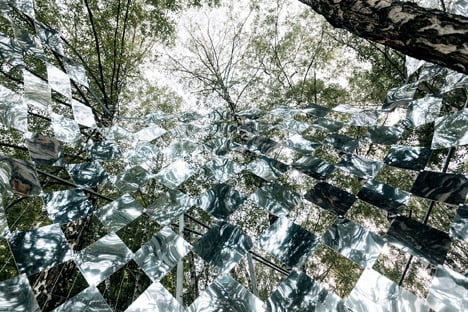
The disorienting piece was formed from over 1,200 pieces of reflective plastic, which were suspended at eye-level on transparent cords to form a 23-metre-long wall woven among the trees.
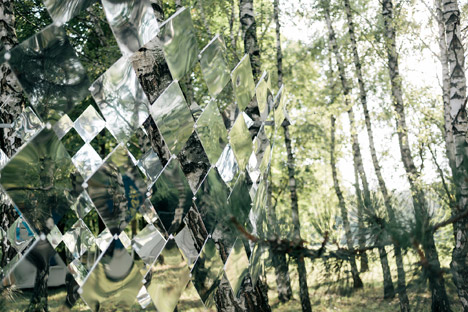
The alternating diamonds of mirror and window gave simultaneous views both through and of the work, allowing visitors to experience both the real and reflected forest.
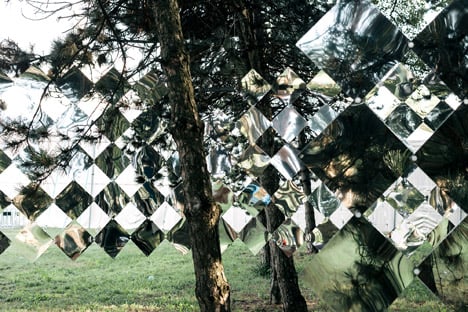
"Moving through the installation, these pixels create a fragmented image by dissolving the back and foreground," said studio co-founder David Tarcali.
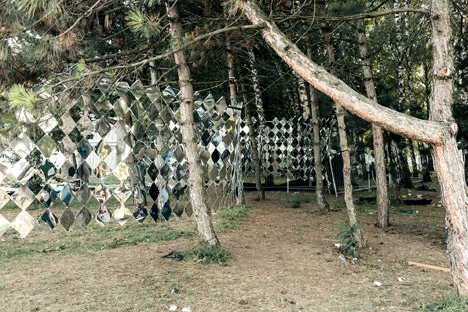
Simple materials and construction methods were chosen, as a reaction against the emerging high-tech visual projections and installations popular in European clubs and music festivals.
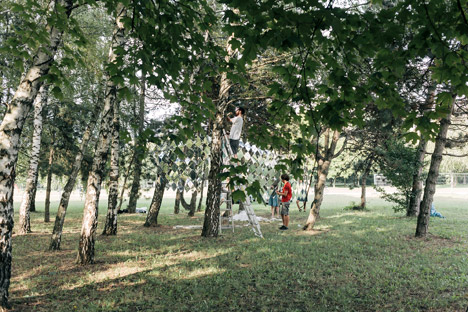
"In the last years, more and more installations have appeared that use mapping, tracking and LED visual effects to interact and attract visitors on the festivals," said Tarcali.
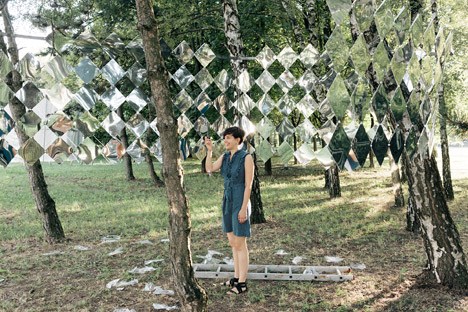
"Our design aim was to challenge these active installations using only basic architectural tools and elements," he added.
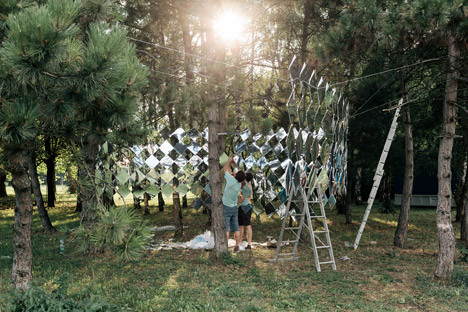
The designers took inspiration for the work from the dazzle camouflage used on battleships in the First and Second World Wars. The ships featured multi-coloured paintwork applied in clashing patterns that were intended to make it difficult for enemies to pick out a target.
Photography is by Balázs Danyi.